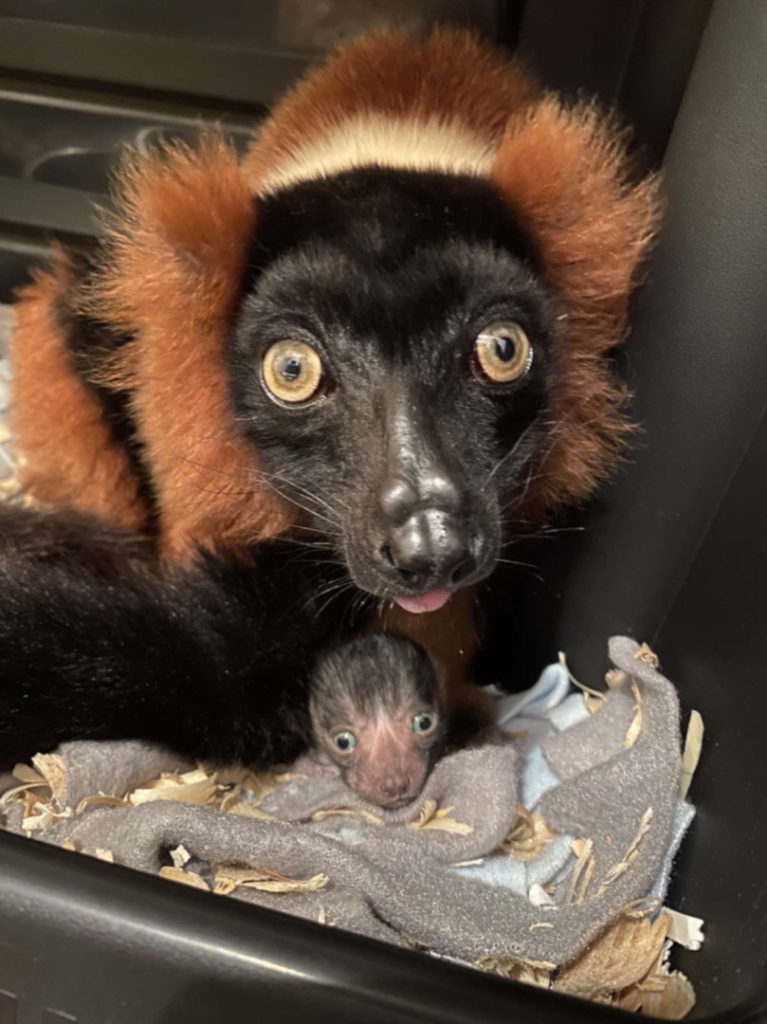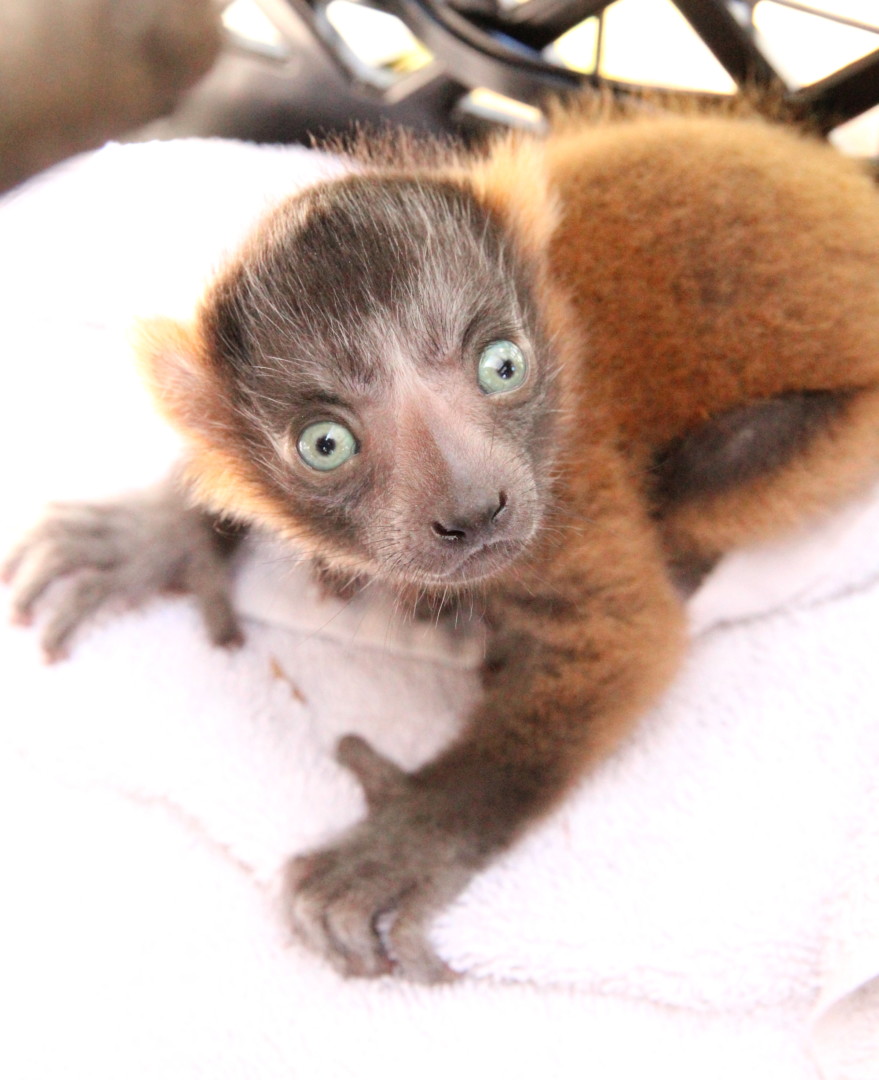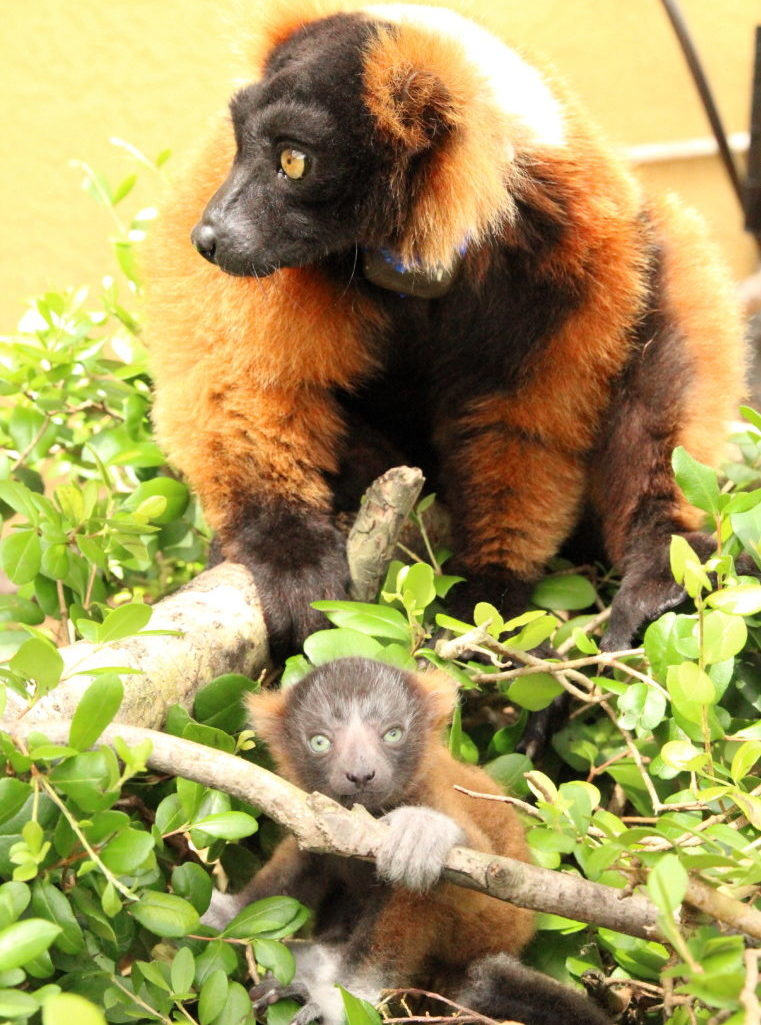The Lemur Conservation Foundation is delighted to announce the birth of a critically endangered red ruffed lemur (Varecia rubra)- the fourth red ruffed lemur born at LCF this year. This little girl was born in the late hours on May 8. Thanks to this year’s amazing donations of several WiFi cameras from our supporters, staff were able to observe the birth from afar, watching for any signs of complications. This is the fourth offspring born to mom Ravina, following the birth of son Afo in 2014, daughter Zazabe in 2016, and son Frezy in 2020.
As demonstrated by our other red ruffed lemur births this year, red ruffed infants don’t cling to their mom. Instead, as females can give birth to litters of up to six infants, she makes a nest where her babies safely reside until they’re big enough to move around on their own. For ruffed lemur moms, this means spending 70-90% of their time in the nest for the first two weeks after giving birth!


This nesting behavior also allows our staff to more closely monitor red ruffed lemur infants including sexing the infant(s) and obtaining regular weights to closely monitor growth and development. For this little girl, the close monitoring was critical to her survival as staff observed she was struggling to nurse on her first day of life.
Concerned about her lack of nursing in the morning, staff increased the frequency and duration of observations as well as initiating multiple weight checks. As she continued to fail to nurse, she began a downward spiral of losing weight, becoming weaker, and being less likely to attempt to nurse. In the afternoon, our Curator made the decision to step in and supplement feed her for the first night. This means our staff came in every two hours overnight to feed the infant and monitor her weight and body temperature.
Within 16 hours of starting this supplementation, Ravina’s infant was stronger, feistier, and had gained weight. The supplement feeding was ended the following morning to encourage the infant to begin nursing from Ravina- which she did.



Staff continued close monitoring on both Ravina and her infant for the first two weeks, but we are pleased to share that they required no additional intervention. The infant quickly began gaining weight at a rate typical for red ruffed lemurs and is now thriving with her family, including older brother Frezy.
Each and every red ruffed birth is significant as red ruffed lemurs are listed as Critically Endangered on the IUCN’s Red List with an extremely high risk of extinction in the wild in the immediate future. In addition to their important role in conservation, education, and research, Ravina, her infant, and all the lemurs at LCF involved in our managed breeding program serve as a genetic safety net against possible extinction in the wild.
